I recently decided to develop a circuit board based on the ESP32-C6 WiFi chip, using Kicad software. The choice for this chip because it is the most modern (May/2024) in terms of WiFi technology. Kicad got selected for the project because it is free and free software, easy to use.
NOTE: Official product page coming soon.
The idea of this project is to create a WiFi board that can be connected directly to a breadboard, using all the facilities that the ESP32 brings us, such as being able to be programmed using the Arduino IDE. Here are some specifications of the ESP32-C6:
WiFi 6 2.4Ghz
Bluetooth 5
Matter Support
Security (encryption)
RISC-V dual core processors
Runs up to 160MHz
4Mb of flash (program memory)
512kB of SRAM (working memory
I chose to use the ESP32-C6 Xiao model from SeeedStudio, as it has boot and reset buttons, as well as being small and being able to be soldered SMD to another printed circuit board. It has an onboard antenna (soldered) and a connector for an external antenna.
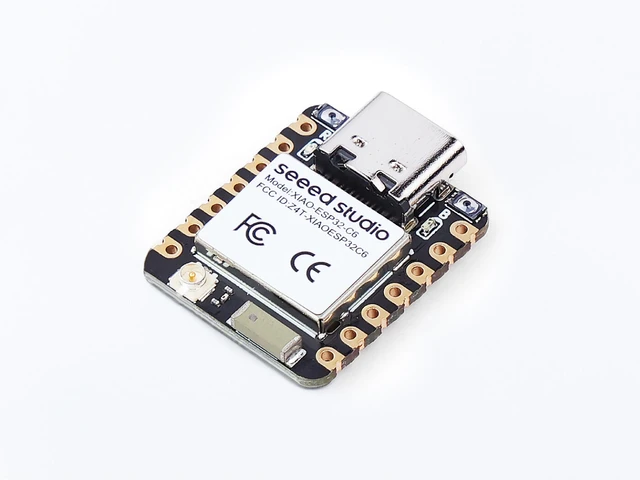
Design decisions
Using Kicad 8 software I am creating the schematic diagram and printed circuit board of the product. Initially I decided to use a pin bar with 15 positions, exposing all the ESP32-C6 Xiao pins and also a pin for external 5V input.
The board also has an LM1117-3.3 regulator that receives external 5V and offers regulated 3.3V to the ESP32-C6. Four capacitors (two at the input and two at the output of the LM1117) filter the source voltage. There is a 10uF capacitor and another 100nF capacitor at the input and the same values are applied to the LM1117-3.3 output.
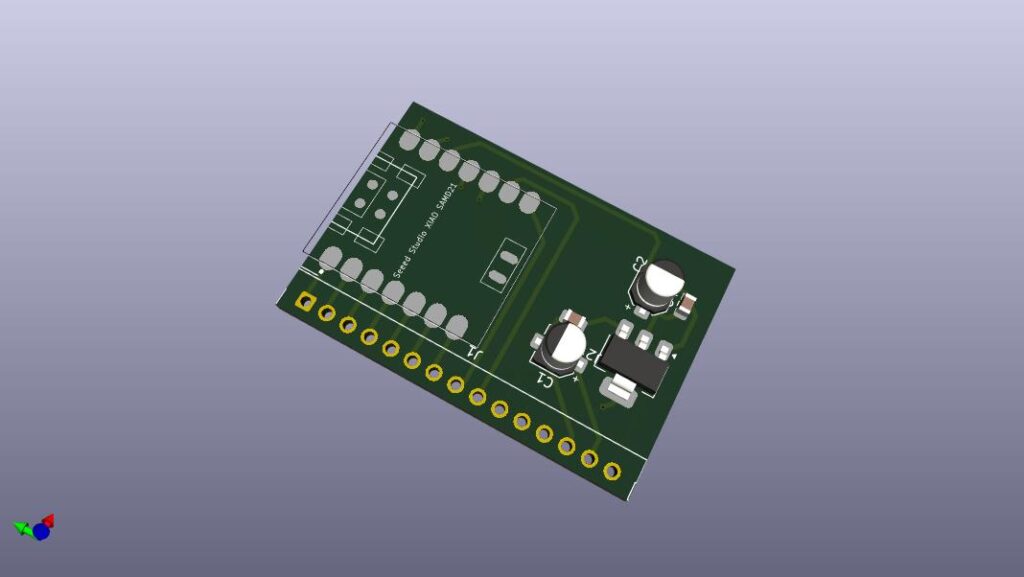
The printed circuit board repository is at this Github link. Keep in mind this is a live project, I’m still tinkering and it’s not ready.
Ideas to be implemented
The project is alive and I’m working, I have the idea of perhaps implementing the following items on the board:
- LM35 (temperature) or DHT11 (temperature and humidity)
- WS2812 (neopixel), addressable RGB LED
- 5V to 3.3V logic level converter, to use IOs at 5V with the board (whose ESP32-C6 Xiao chip only works at 3.3V)
Rounded PCB edges
Currently the board is routed like this, without the rounded corners and only with the 3.3V regulator:
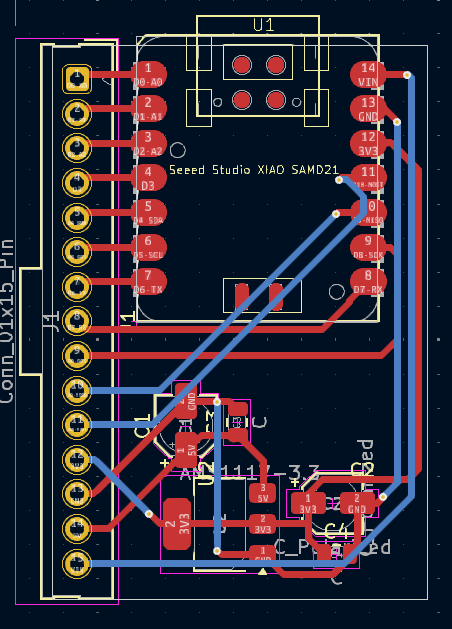
Stay tuned and I’ll post the news here. In the meantime, discover some other circuit board from us.

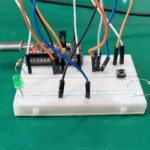
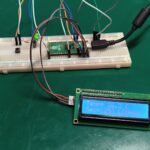



Leave a Reply